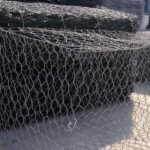The single most important tool, utensil or appliance in your kitchen is your set of knives. There’s almost no dish that you can make without a knife, and anybody from home cooks to professional chefs will tell you that knife skills are the foundation of good cooking.
That’s why it’s important to make sure that you have a decent set of knives, and that you take good care of your knives on a regular basis. Knives dull over time, and having dull knives in the kitchen is dangerous. Dull knives are why your knife slips when you’re cutting something. Dull knives mean that you need to use much more strength when cutting or slicing, which increases the danger of using them.
So today we’re going to go over how you can sharpen your knives and keep them in tip top shape. But before we start, it’s important that you get a good set of knives, and that you understand what each type of knife is for. If you’re unfamiliar with this subject, check out this in depth guide on the types of knives and their uses – it’s a good place to get started.

Typically, you should be sharpening your knives every couple of months. If you see that your knife work is getting worse, or that the precise dices, slices and cuts that you’re making are getting less precise, or that you’re beginning to use more strength in your cuts, then it’s probably time to sharpen.
There are three main ways to sharpen your knives – with a whetstone, with a manual sharpener, or with an electric sharpener.
There’s also something called a honing steel, which is used to hone your knives. Honing your knives isn’t the same as sharpening them – honing is basically the process of straightening out your knife edge. Because honing isn’t the same as sharpening, we won’t be covering honing in this post. But you can checkout the best honing steel to hone your knives.
To sharpen your knife with a whetstone (the most old school way), first, check with the manufacturer of the whetstone to see if you need to soak it in water before use – some whetstones are designed to be soaked first. If your whetstone is the type that needs to be soaked, go ahead and cover it with water and leave it there for about 10 minutes. Once soaked, you just need to slide the knife across the whetstone at about a 20 degree angle, and drag is GENTLY and slowly against the whetstone. Do this with each side of your knife that you want to sharpen. Whetstones generally have two sides – a coarse side and a fine side. Start of the coarse, sharpen for a few strokes, then move to the fine side.
Using a knife sharpener is a less traditional method, but is probably easier for most people. Just put the knife into the course side, pulling it inwards a few times, then move to the fine side,, and do the same. Keep in mind that sharpeners are generally seen as not as effective as whetstones, as they cause more long term wear for your knives than your whetstone. In general, you might want to use the sharpener for your less fancy knives, and use a whetstone for your favorite chef’s knife.

Electric knife sharpeners are even easier to use – in fact, they come with instructions, so you can pretty much just follow the manual.
Again, in general, you should be using a whetstone for your favorite Japanese chef’s knives, but for other less important knives, you can use a sharpener.
Hopefully after this article you’ll have a better idea of how to take good care of your precious knives!






